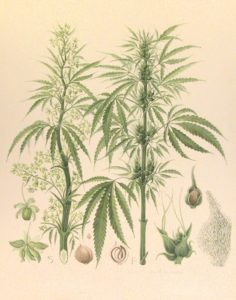 “Have you noticed that during the month of October, the NFL suddenly becomes intensely concerned with making sure you’re aware of breast cancer? Pink jerseys! Huge Ass Pink Ribbons at midfield! Pink motherfucking cleats! Fans interested in aware-ing on their own can even click on over to the NFL’s store and purchase ugly pink crap of their own under the assumption that their good intentions will actually contribute to the fight against cancer. Well, I hate to burst your Pepto Bismo Pink bubble, wearers of dangly earrings that contain both ribbons and tiny footballs, but you’ve been had — the NFL’s Breast Cancer Awareness Month campaign does raise itsy bitsy amounts of money for the fight against cancer, but the amount of money it raises pales in comparison to the amount of money it raises for billionaire NFL owners.
“Have you noticed that during the month of October, the NFL suddenly becomes intensely concerned with making sure you’re aware of breast cancer? Pink jerseys! Huge Ass Pink Ribbons at midfield! Pink motherfucking cleats! Fans interested in aware-ing on their own can even click on over to the NFL’s store and purchase ugly pink crap of their own under the assumption that their good intentions will actually contribute to the fight against cancer. Well, I hate to burst your Pepto Bismo Pink bubble, wearers of dangly earrings that contain both ribbons and tiny footballs, but you’ve been had — the NFL’s Breast Cancer Awareness Month campaign does raise itsy bitsy amounts of money for the fight against cancer, but the amount of money it raises pales in comparison to the amount of money it raises for billionaire NFL owners.
The NFL claims that its pink philanthropy efforts “support the fight against breast cancer” by “promoting awareness” and providing funds to the American Cancer Society. But what they’re mostly promoting is, uh, buying NFL gear, the profits from which are overwhelmingly pocketed by the NFL.
According to Business Insider, the NFL’s October Breast Cancer Awareness Month fundraising effort is multi-pronged. There’s the on-field onslaught of pink (AWARENESS), the off-field auction of autographed or otherwise noteworthy NFL paraphernalia (MONEY FOR THE CURE!), and the part of the NFL store that entices shoppers to purchase officially licensed NFL breast cancer gear, a portion of which goes to FINDING A CURE. According to the League, 100% of the proceeds from the specialty auction go to the American Cancer Society, but the total percentage of purchases of officially licensed gear that actually goes to FINDING A CURE is actually kind of pathetic — 5%. If you want to look at this cynically, in a way, the on-field wearin’ o’ the pink serves as an ad to direct consumers to purchase pink fan items.
BUT WAIT, you might say, AT LEAST THEY’RE DOING SOMETHING. And 5% is still something! Well, kind of. As BI pointed out, if NFL products are sold at a 100% markup and only 5% of sale proceeds go to the American Cancer Society, then the NFL is pocketing 90% of sales of Breast Cancer Awareness products, many of which would not be purchased if they didn’t come with a promise that consumers were “helping.” And, more perspective: while the American Cancer Society isn’t, say, Komen, they still don’t use 100% of the money they receive to “fight” breast cancer. Only 70% of donations taken in by the organization go toward cancer research. So, if you spend $10 on pink stink from the NFL, only about 35 cents is going to finding a cure for breast cancer. And $4.50 goes right back to the NFL, where I like to imagine that it’s spent on gas for a Lake Minnetonka pleasure cruise. For the cure.
But what about awareness?! Surely the NFL is helping keep people aware and alert and vigilant that at any moment, breast cancer could be lurking around a corner in a dark alley waiting with a hot pink switchblade to steal your purse and boobs. The thing about awareness is that it’s all but impossible to quantify — and everyone knows about breast cancer. If you asked 100 people if they’re aware that breast cancer is a thing and that it’s almost impossible to predict and most often affects women, I’d bet that most of them would nod before slowly backing away from you. Breast cancer awareness is so ubiquitous that if deadly diseases attended the same high school, breast cancer would probably be voted prom queen. The “awareness” that comes from the NFL’s sales of pink branded items doesn’t justify the extent to which the league is taking advantage of consumers’ good intentions to pad their wallets. Even if no NFL player ever touched another pink thing again, Americans would go right on being aware of the disease. Unless the Buffalo Jills or New Orleans Saintsations cheerleaders are holding up signs that show women how to give themselves breast self-exams or tickets come with 5 page printouts of places low income women can obtain breast health screening for low or no cost, the type of awareness the NFL is providing is useless, vague garbage.
Since the program’s inception four years ago, the NFL has raised $3 million for breast cancer. In 2009, the League made $8.5 billion. Last year, they made $9.5 billion. Commissioner Roger Goodell has set a revenue goal of $25 billion per year by the year 2027. A million per year out of between $8.5 and $9.5 billion in revenues? Pardon me while I don’t slobber all over the NFL’s pink-drenched marketing campaign.
Want to cure breast cancer? Give directly to an organization that cures breast cancer, or to an advocacy group that seeks actual cures, not marketing and corporate profits. Besides, wearing those horrid pink NFL breast cancer rain boots actually causes cancer. Of the eyes.”
http://jezebel.com/5950971/the-nfls-campaign-against-breast-cancer-is-a-total-scam



